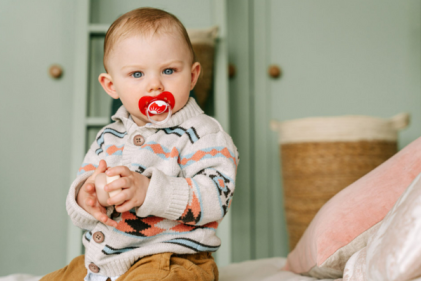 There's no set time when you have to replace your little one’s crib with a regular bed. Many parents make the switch because they're worried that their toddler might climb out of the crib and this is a real safety concern. Once the cot mattress is at its lowest height and the top rail sits below your baby’s chest, this is usually a sign that it’s time to make up the bed.
There's no set time when you have to replace your little one’s crib with a regular bed. Many parents make the switch because they're worried that their toddler might climb out of the crib and this is a real safety concern. Once the cot mattress is at its lowest height and the top rail sits below your baby’s chest, this is usually a sign that it’s time to make up the bed.
Here are some useful safety tips for the transition from cot to bed.
- Position the bed in a corner, so there are two walls preventing your toddler from rolling out of an area of the bed.
- Consider using a guard rail along the other side of the bed. Choose a rail that can be lowered and raised so your child can get safely in and out of bed.
- If you don’t want to use a rail or have decided to remove it, place a mattress or large cushions on the floor below the bed so that if your child does roll out, they’ll have a soft landing.
- Similarly, move furniture, such as bedside tables and lamps, away from the bed so that if your little one rolls out, they won't hurt themselves on the way down.
- Make sure their room and the house are safe at night. Children who sleep in a bed suddenly find themselves with the freedom to get in and out when they want, so you may find your little one wandering around the house in the middle of the night. Consider installing a guard rail on the stairs
- You should also keep in mind that bunk beds aren’t safe for toddlers or pre-schoolers, even if you plan for them to sleep on the lower bunk. Kids are curious creatures and won’t be able to resist climbing up to the top bunk, which could result in an awful accident.
Another reason some parents decide to switch their little one to a bed is that there’s another baby on the way. If this is your reason, make the switch at least six to eight weeks before the new baby is due. You want your toddler well settled in his new bed before he sees the baby taking over "his" or “her” crib.







